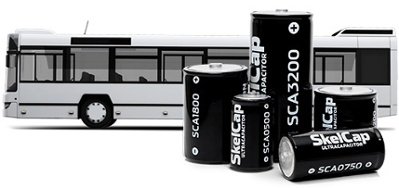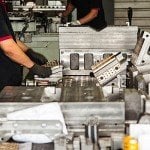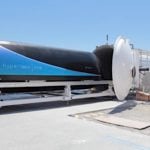Researchers at Superdielectrics Ltd recently discovered a new material that could bolster carbon-based supercapacitor performance. Supercapacitors, or ultracapacitors as they are sometimes known, are useful in emitting a charge quickly. Supercapacitors generate a charge through electrostatic fields rather than creating electricity through chemical reactions.

Contact Lens Material Leads to Discovery
Director of research Dr. Donald Highgate originally developed the material for contact lenses and recently discovered that the material was also shockingly good at holding an electrostatic field. Dr. Highgate is working with Bristol and Surrey universities to develop supercapacitors from his polymer. The goal of the research is to develop a supercapacitor which surpasses lithium-ion batteries.
However, that will require large scale replication of the prototype’s performance, which is a bit tricky at this point as supercapacitors are generally only able to generate quick bursts of power, such as that which is used to jumpstart a vehicle.
“The two main advantages of conventional supercapacitors over batteries are their ability to handle much higher charge and discharge rates, and their longer cycle life,” said UK’s National Physical Laboratory Fellow Gareth Hinds. “The downside is that they tend to be relatively high cost and can only store a few seconds-, or at most, minutes-worth of power.”
While these supercapacitors are incredibly beneficial when applying quick bursts needed for acceleration or when starting a tool or piece of machinery that does not require a tremendous amount of energy, they are nowhere near the level they need to be to power vehicles or even smaller objects like phones for an extended period.
Supercapacitors Currently in Use
Skeleton Technologies
Skeleton Technologies, based in Estonia, Germany, and Finland, is a current supplier of “graphene-based ultracapacitors and energy-storage systems.”
According to co-founder and Chief Executive Taavi Maidberk, the company incorporates layers of graphene and other carbon-based materials into their its supercapacitors. Each gram of graphene covers 2,000 square metres. The large surface area significantly increases the amount of power that the supercapacitors can hold.

Products created by Skeleton Technologies are currently being used in hybrid vehicles, and they have also accomplished such feats as achieving 32 per cent fuel savings in a Sainsbury’s supermarket diesel-electric delivery van and recovering energy from container terminal cranes.
However, Madiberk acknowledges that combining supercapacitors with lithium-ion batteries is likely the best option in the short-term, offering the best of both options in electric vehicles.
NaWa Technologies
NaWa Technologies, based in the South of France, also makes supercapacitors. NaWa Chief Executive Ulrik Grape also described the benefits of supercapacitors when coupled with lithium-ion batteries.
“Supercapacitors don’t store as much energy, but their response is instantaneous. So, a supercapacitor could handle acceleration and energy recovery under braking — taking care of the stressful part of a battery’s life – possibly doubling or tripling a battery’s life expectancy,” said Grape.
While the supercapacitors take care of the acceleration and energy recovery, the lithium-ion batteries handle energy storage, which is essential in powering vehicles that utilize alternative energy sources, such as wind and solar power, when those sources are not readily available. When the sun has set at night and the wind has died down, people will still need to get around, and the excess energy backup will get them where they need to go.

Supercapacitors also contribute to improved range performance due to their use of carbon, which is lightweight. The combination of supercapacitors and lithium-ion batteries greatly increases range and allows for extended use that is vital in electric vehicles travelling long distances and with greater frequency.
According to NaWa, the overall weight of a Formula E racing car’s battery could be reduced by one-third without any loss of range. The technology involved with making NaWa’s products utilizes electrodes made from carbon and graphene nanotubes, which store energy on the surface. The tubes are quite small… so small, in fact, that 10 billion of them could fit inside an area roughly one square centimeter in size.
The company has high hopes for the future of supercapacitors and their ability to improve the functionality of batteries in electric vehicles. “We think the ability to charge and discharge a battery fast will be one of the most important things in the future,” said Grape. “We don’t have as much energy as a lithium-ion battery, but we can do many more cycles – charges and discharges – up to a million. Carbon is such a robust material.”
A standard battery, on the other hand, typically only lasts through 3,000 to 5,000 cycles, wearing out once the chemicals used to generate electricity lose their potency. Furthermore, supercapacitors do not require rare materials such as cobalt, making them less costly and difficult to mass produce.
Supercapacitors in Trains?
According to Skeleton Technologies, the fuel savings achieved with a supercapacitor-powered KERS (Kinetic Energy Recuperation System) can be as high as 32 per cent. For this reason, it is hypothesized that the technology could be adapted for use in hybrid trains as well.
“To maximize the impact of the KERS, it should be possible to include ultracapacitor-based KERS on the rolling stock also, because this would ease the stop-start phases for the trains,” said Olivier Chabilan in a recent blog post on the Skeleton Technologies website. “To some extent, any individual rolling stock could also move by itself and in that way ease the assembling of trains.”

“Ultracapacitors can also be very handy on electric trains, even ones with pantographs,” he continued. “There are areas where maintaining the overhead wiring can be difficult, for instance in tunnels, and this is where ultracapacitors can be useful.”
The idea is that if the overhead line is removed locally, then the locomotive could be powered for approximately 5 to 10 kilometres and require mere minutes to recharge when reconnecting with the pantograph to the catenary.
Supercapacitors are currently used on trams and light railway systems, providing the necessary acceleration and stoppage during travel between stops. This also allows for increased capacity without sacrificing performance. Supercapacitors could also be implemented within the network, rather than solely operating when installed on the train itself, which would prevent tension drops and eliminate power cuts that typically interfere with operations.
































